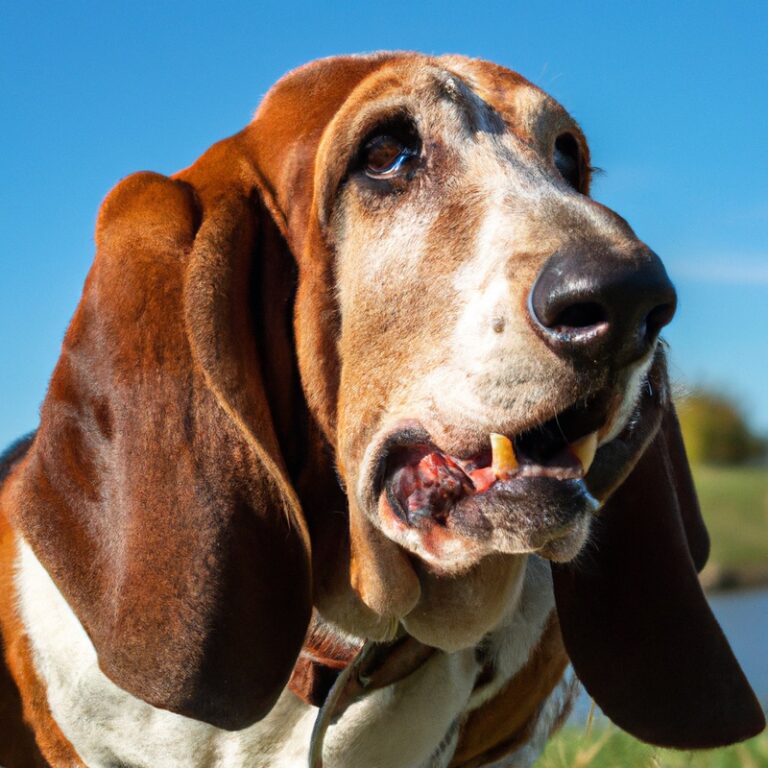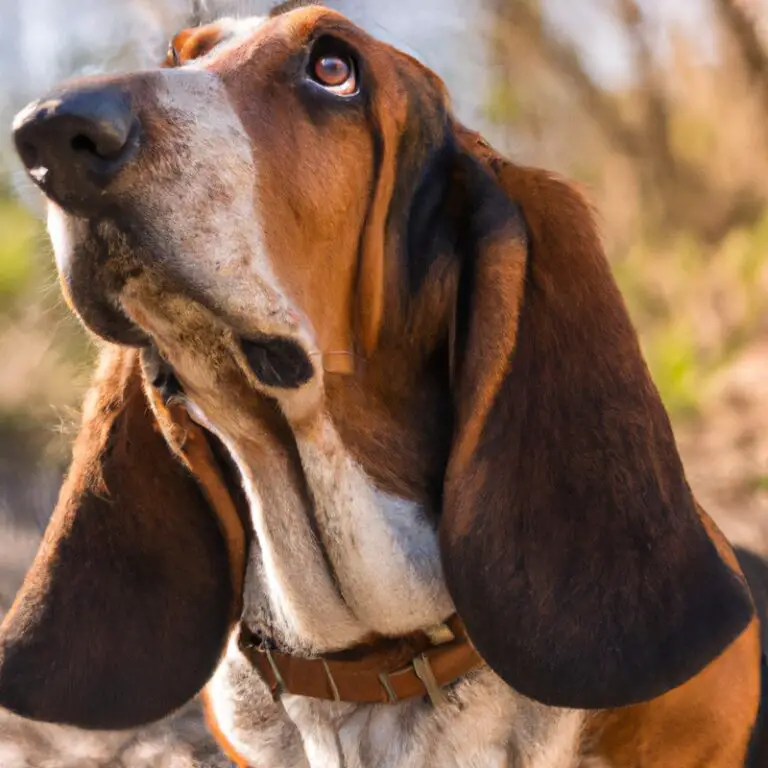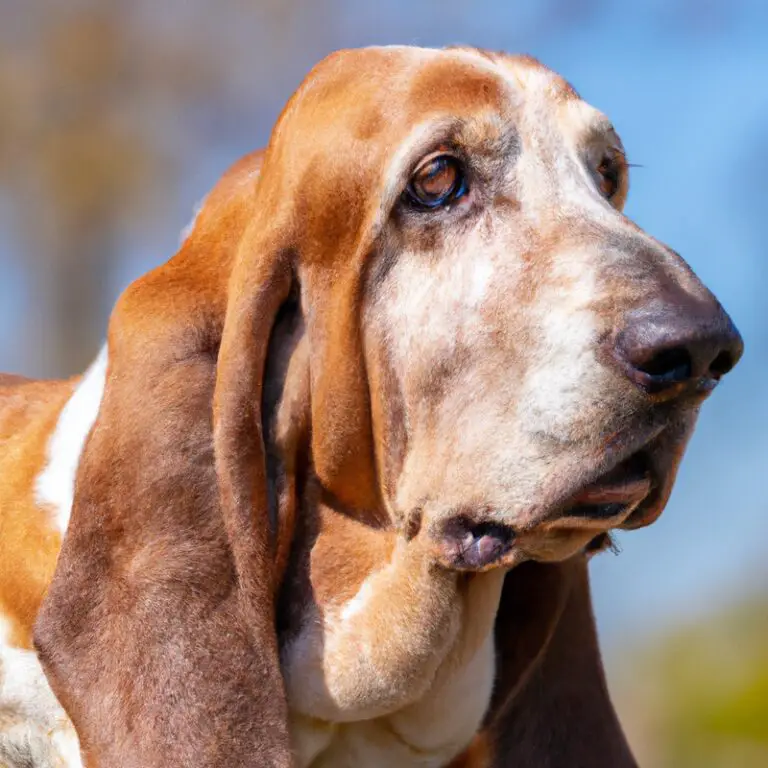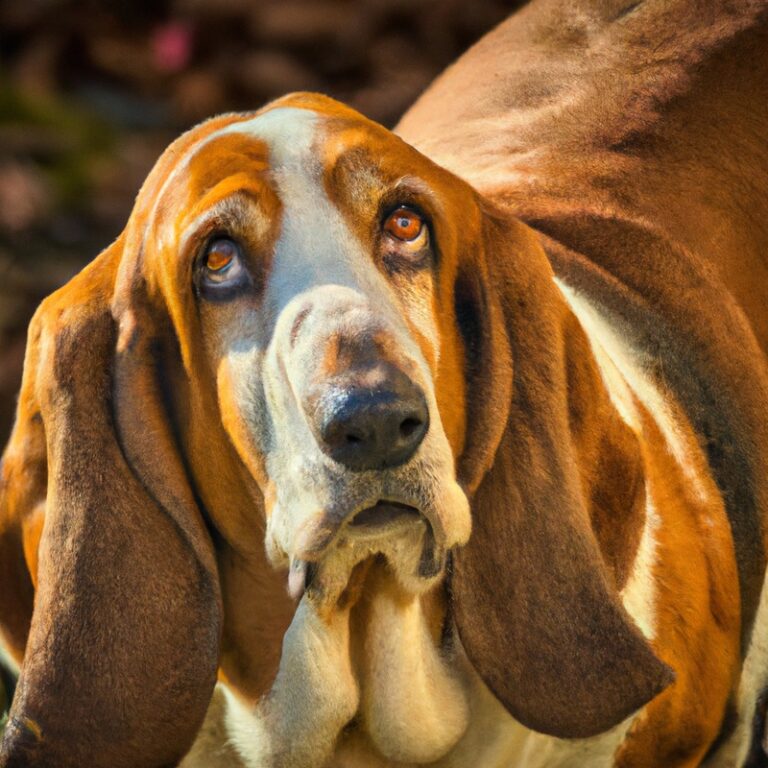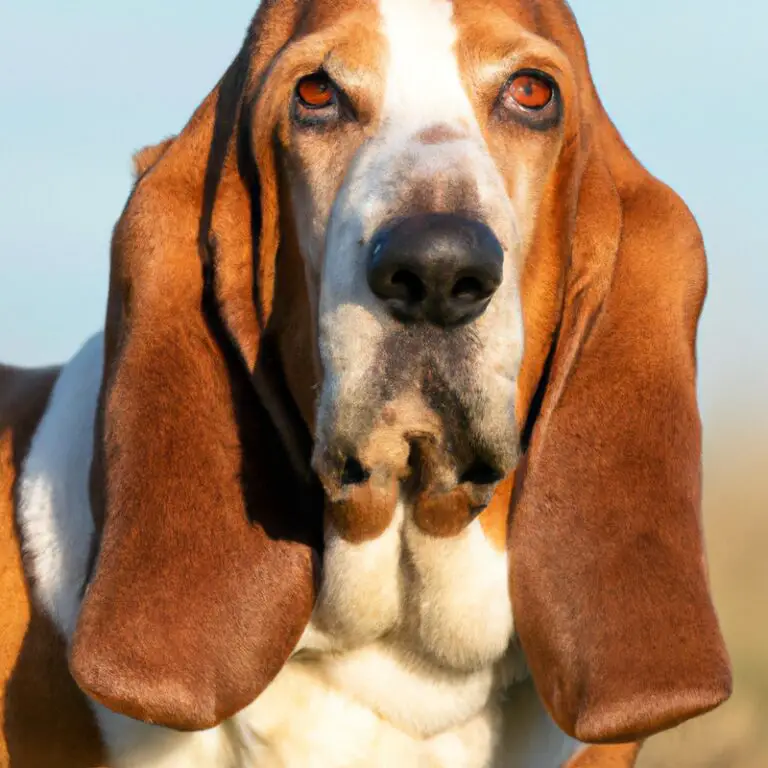Are Basset Hounds Good With Other Pets?
Key Takeaways:
- Basset Hounds generally get along well with other pets.
- Proper socialization is key to ensuring a Basset Hound’s compatibility with other pets.
- Basset Hounds have a laid-back nature that often enables them to peacefully coexist with other animals.
- While Basset Hounds tend to be friendly, individual temperament and training can vary, so monitoring initial interactions is important.
Do you ever wonder if your four-legged friend will get along with other pets?
Well, if you’re the proud owner of a Basset Hound, I’m here to shed some light on this topic.
As a seasoned expert in the field, I’ve witnessed firsthand the interactions between Basset Hounds and various other animals.
Today, we’ll uncover the factors that determine compatibility, such as their temperament, socialization, training, age, and background.
Whether you have dogs, cats, or even small animals, we’ll explore the tips and challenges of integrating your Basset Hound into a harmonious multi-pet household.
So, let’s dive in and find out if Basset Hounds are indeed good with other pets!
| Pet Type | Compatibility |
| Dogs | Good |
| Cats | Variable |
| Small mammals (e.g. rabbits, guinea pigs) | Good |
| Birds | Variable |
| Reptiles (e.g. turtles, snakes) | Not recommended |
Factors that Determine Compatibility
Basset Hound Temperament
Basset Hounds have a friendly and easygoing temperament. They are known to be gentle, patient, and good-natured.
They are generally calm and not easily startled or agitated.
Bassets love to be around their families and are good with children. They can be a bit stubborn at times, but they are also very loyal and affectionate.
They may be a little reserved around strangers, but they usually warm up quickly.
Additionally, they have a strong sense of smell and can be quite determined when they catch a scent.
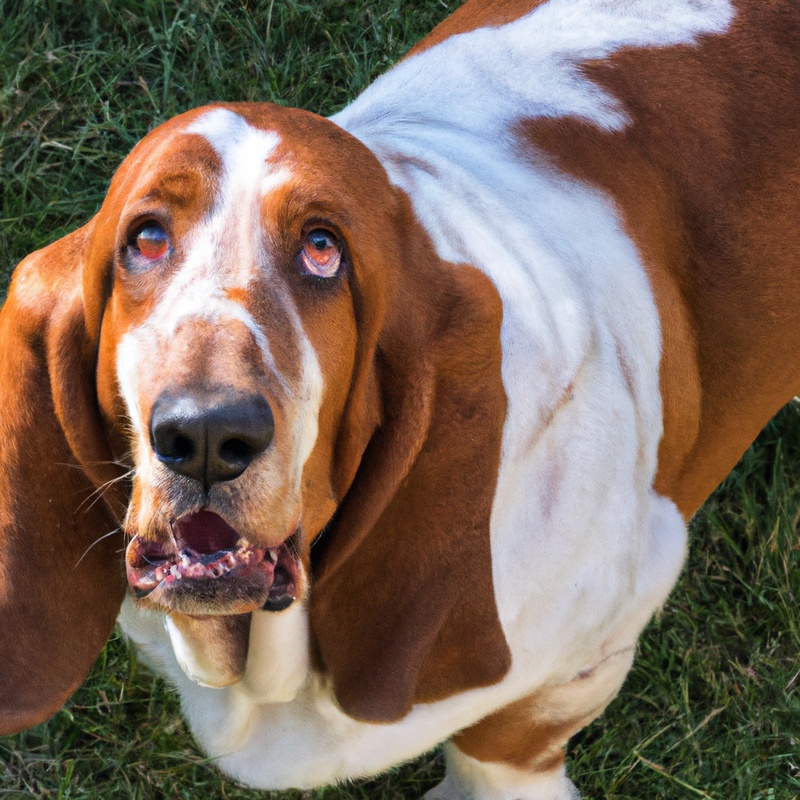
Socialization and Training
Socialization and training are important for ensuring compatibility between Basset Hounds and other pets.
Proper socialization exposes them to different animals, people, and environments from a young age, helping them develop good behavior and confidence.
Training should focus on obedience commands and positive reinforcement techniques.
Consistency and patience are key.
Additionally, teaching basic commands like “sit” and “stay” can promote harmonious interactions with other pets.
Consulting a professional trainer can be beneficial, especially if you encounter any challenges during the process.

Age and Background of Basset Hound
The age and background of a Basset Hound can play a significant role in determining their compatibility with other pets.
- Puppies may be more adaptable and open to learning, making it easier to introduce them to other animals at a young age.
- Adult Basset Hounds might already have established preferences and behaviors, so it’s important to consider their past experiences with other pets.
- If a Basset Hound has had negative encounters with certain types of animals in the past, it may affect their ability to get along with them in the future.
Remember, each Basset Hound is unique, so it’s crucial to assess their individual temperament and socialization needs when introducing them to other pets.

Basset Hounds with Dogs
Introducing Basset Hound to Another Dog
Introducing a Basset Hound to another dog can be a smooth process with the right approach.
Start by allowing them to sniff each other’s scents through a closed door or a baby gate.
Then, gradually introduce them in a neutral territory, like a park, while keeping them on a leash.
Observe their body language for signs of aggression or tension.
Remember to provide positive reinforcement and treats for good behavior.
With patience, proper introductions, and supervision, your Basset Hound can have a friendly relationship with another dog.
Supervised Interactions and Playtime
Supervised interactions and playtime are essential when introducing a Basset Hound to other pets. It’s important to closely monitor their interactions to ensure everyone’s safety.
Start with short, controlled sessions and gradually increase their time together.
Observe body language, ensuring it remains relaxed and friendly. Use positive reinforcement and rewards to encourage good behavior.
It’s always a good idea to seek professional help if any issues arise.
Remember, supervision is key to fostering a positive and harmonious relationship between pets.
Signs of Compatibility or Conflict
When introducing your Basset Hound to another pet, keep an eye out for signs of compatibility or conflict.
Watch their body language – if they are relaxed, showing loose and wagging tails, it’s a good sign.
Growling, raised fur, or snapping can indicate conflict.
Allow them to approach each other slowly and monitor their interactions closely.
Positive interactions, like playing or snuggling, are signs of compatibility.
If they show aggression or fear, it’s important to separate them and seek professional help if needed.
Basset Hounds with Cats
Introducing Basset Hound to a Cat
Introducing a Basset Hound to a cat requires patience and careful monitoring.
Start by creating separate safe spaces for both pets, allowing them to interact through a secure barrier.
Gradually introduce them in controlled and supervised interactions, watching for signs of fear or aggression.
Monitor their body language and provide positive reinforcement for calm behavior.
Seek professional help if needed.
Remember, successful introductions take time and can vary with each individual pet.
Creating Safe Spaces for Both Pets
Creating safe spaces for both pets is essential when introducing a Basset Hound to another animal. Provide separate areas for each pet to retreat to when they need some alone time.
Use baby gates or pet barriers to create physical boundaries.
Ensure that both pets have access to their own food, water, and litter box. Monitor their interactions closely and intervene if any signs of aggression or discomfort arise.
Gradually increase their time together, always prioritizing their safety and well-being.
Monitoring Interactions and Body Language
When introducing a Basset Hound to another pet, it’s important to monitor their interactions and pay attention to their body language.
Watch for signs of discomfort or aggression, such as growling, lunging, or raised fur.
Look for positive signs too, like relaxed body postures and wagging tails.
If you notice any negative behaviors, intervene and separate the pets.
Don’t force interactions; instead, give them space and time to adjust.
Trust your instincts and seek professional guidance if needed.
Successful integration takes patience, observation, and understanding.
Basset Hounds with Small Animals
Prey Drive in Basset Hounds
Basset Hounds have a moderate prey drive. This means they may be interested in chasing small animals like squirrels or rabbits.
It’s important to be aware of this instinct and take precautions to keep both your Basset Hound and other small animals safe.
Keep them separated when not supervised and use proper confinement measures. Controlled and supervised interactions can help manage their prey drive and prevent any unwanted incidents.
Remember, each Basset Hound is unique, so it’s essential to assess their individual prey drive and adjust accordingly.
Separation and Safe Confinement
When it comes to ensuring the safety and well-being of your Basset Hound and other pets, separation and safe confinement are crucial. By providing separate spaces, such as crates or designated rooms, you can prevent unwanted interactions and potential conflicts.
This allows each pet to have their own safe haven.
When introducing them, always supervise interactions and gradually increase the time they spend together. Providing a controlled environment ensures the safety and comfort of all pets involved.
Controlled and Supervised Interactions
Controlled and supervised interactions are essential when introducing your Basset Hound to other pets. By closely monitoring their initial interactions, you can ensure the safety and well-being of all animals involved.
Keep them on a leash or use baby gates to create a controlled environment.
Slowly introduce them and observe their body language for signs of stress or aggression. If any issues arise, intervene immediately and separate them.
With patience and careful supervision, you can increase the chances of a positive and harmonious relationship between your Basset Hound and other pets.
Potential Challenges
Basset Hound’s Wanderlust
Basset Hounds have a natural instinct for wandering and exploring. They are scent hounds, known for their excellent sense of smell and tracking abilities.
This means that when they catch an interesting scent, they may be inclined to follow it, which could lead them astray.
It’s important to be aware of this tendency and take precautions to prevent them from wandering off. Keeping them on a leash or in a securely fenced area is a good way to ensure their safety and prevent them from getting lost.
Regular exercise and mental stimulation can also help to minimize their wanderlust.
Food and Resource Guarding
Food and resource guarding can be a potential challenge with Basset Hounds, as with any other breed.
Some Basset Hounds may show possessive behaviors over their food, toys, or favorite spots.
It’s important to address this issue right from the start.
Using positive reinforcement training techniques can help in managing and modifying guarding behaviors.
Gradual desensitization, teaching the “leave it” command, and providing enrichment activities can all contribute to reducing food and resource guarding tendencies in Basset Hounds.
Separation Anxiety and Jealousy
Separation anxiety and jealousy can be common challenges for Basset Hounds when it comes to their relationships with other pets.
Bassets can develop separation anxiety when left alone for long periods.
This can lead to destructive behavior or excessive barking.
Jealousy may arise when they feel their owners are giving attention to another pet.
It’s important to address these issues through proper training, socialization, and providing mental stimulation.
Gradual introductions, positive reinforcement, and seeking professional help if needed can help alleviate these concerns.
Monitoring their behavior and providing a safe and comforting environment is key.
Tips for Successful Pet Integration
Slow and Proper Introductions
When introducing a new pet to your Basset Hound, taking it slow and following proper introductions is key. Start by allowing them to sniff each other’s scent through a closed door or a baby gate.
After a few days, you can try supervised face-to-face interactions on neutral ground.
Always monitor their body language and provide positive reinforcement for calm behavior. Remember, every pet is different, so be patient and don’t rush the process.
Seeking professional help can also be beneficial if needed.
Positive Reinforcement and Rewards
Positive reinforcement and rewards are essential when integrating a Basset Hound with other pets. I use treats, praise, and affection to reward good behavior and create positive associations.
This helps build trust and encourages the desired interactions between pets.
Additionally, I believe in being consistent and patient when using positive reinforcement, as it takes time for pets to adjust and form positive relationships. It’s important to remember that each pet is unique, so the rewards and reinforcement techniques may vary based on their individual preferences and needs.
Seeking Professional Help if Needed
If you’re struggling with integrating your Basset Hound with other pets, don’t hesitate to seek professional help.
A professional trainer or animal behaviorist can provide expert guidance and support tailored to your specific situation.
They can assess the dynamics between your pets, offer training techniques, and help you address any challenges that arise.
Remember, it’s important to prioritize the safety and well-being of all your pets, and seeking professional help can greatly increase your chances of successful pet integration.
Final Verdict
Based on my expertise and experience with Basset Hounds, I can confidently say that they can be good with other pets if certain factors are considered. Temperament, socialization, and the age/background of the Basset Hound play crucial roles in determining compatibility.
When introducing them to dogs, cats, or small animals, it is important to take slow and proper introductions, create safe spaces, and closely monitor interactions.
Potential challenges like wanderlust and resource guarding should be addressed with training and professional help if needed. Overall, with the right approach and patience, Basset Hounds can coexist harmoniously with other pets.


